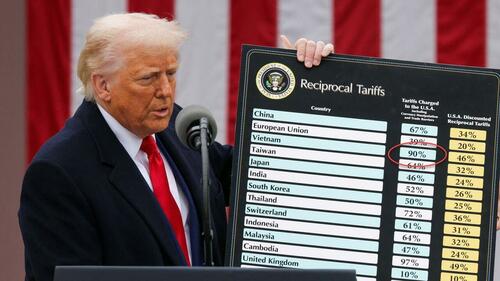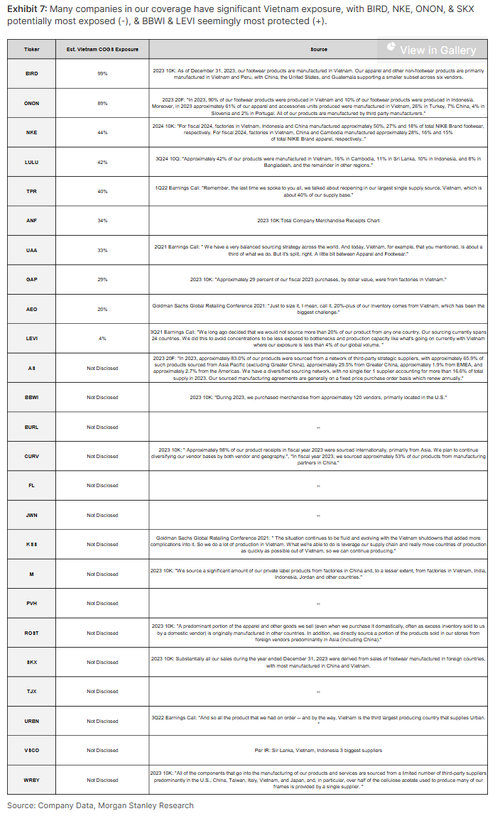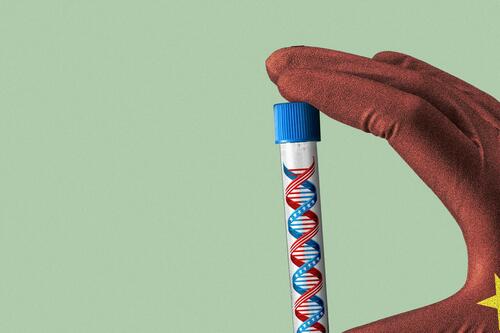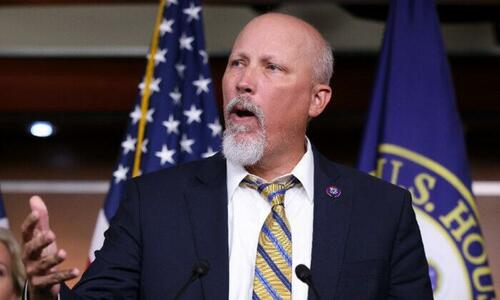Authored by Edward Ring via American Greatness,
Throughout the developed world, birth rates have crashed.
But the “population bomb” that author Paul Ehrlich warned us about in the 1970s still exists; it’s just confined to the nations with the lowest per capita income. The correlation is almost perfect. The average number of children per woman in extremely poor nations is still extremely high.

For example, births per woman in Niger stand at a world-leading 6.6, which means that every generation the population of that nation will more than triple. Meanwhile, the per capita income in Niger, even based on purchasing power parity, stands at a dismal $2,084 per year. Exponential national population growth is occurring across most of the African continent, where in 1950, the population was estimated at around 225 million compared to an estimated 1.5 billion today. By 2050, Africa’s population is estimated to rise to 2.5 billion and is not estimated to level off until 2100 at nearly 4 billion people.
There are pockets of fecundity elsewhere in the world, primarily in the Middle East, but if you exclude Africa and some Islamic nations, the entire global population is on a path to oblivion. From China (1.2 children per woman), Korea (0.9), and Japan (1.3) to Germany (1.5), Italy (1.3), and the United Kingdom (1.6), populations are on track to descend by 50 percent in at most two generations. The European numbers are only slightly better than the Asian numbers because of immigration.
Because of the sensitive nature of the information, it is difficult to get reliable statistics on the birth rates of indigenous European women. But according to official data from the German government, nearly 50 percent of all children under the age of five in Germany have a “migration background.” Since 80 percent of Germany’s population is still reported as having “German origin,” it is clear that immigrant birthrates are far higher than the birthrates of indigenous German women.
This pattern repeats itself throughout the European nations and nations of European origin. According to the Office of National Statistics in the United Kingdom, the most common name for baby boys is now Muhammad. In the hopefully more assimilative United States, according to Pew Research, “minority” births now outnumber white births.
What these demographic trends portend for our future is central to every major issue we face. Can we maintain economic health if we accept a population in terminal decline? So far, the Asians are betting they can, relying on automation and AI to fill the labor gaps. Can we maintain cultural stability if we import Africans and Moslems to have babies since we don’t want to anymore? That’s the bet the European nations are making.
But there is an even more fundamental question that ought to be the topic of massive public debate, without stigmatizing the participants or restricting the theories offered up. Why don’t women in developed nations want to have babies anymore?
Answers to this question typically travel into safe spaces.
It’s economics: the cost of living is too high. Or the slightly conspiratorial but increasingly mainstream explanation that endocrine disruptors in our food and water have lowered the fertility and the libido of men and women alike. And, of course, the likely possibility that social media has spawned a younger generation that is isolated, socially stunted, and intimacy challenged.
To some degree or another, all of these explanations are true, but they ignore countervailing facts: Our nations are now filled with subcultures for whom none of these reasons apply to nearly the same effect. What are they doing that we stopped doing? And here is where we dive into the topics and theories that one may risk career and political suicide to utter.
There is a pundit on X who goes by the name “hoe_math” and bills himself as “history’s manliest and most hilarious sex genius.” He recently released a brief video post on his X account that squeezes several inflammatory explanations for low female fertility into 2 minutes and 14 seconds. Something this succinct deserves analysis, despite being horrifically biased, sexist, etc., etc., etc., because even if he is overstating his case and ignoring other factors and being deliberately offensive, he is covering the forbidden bases that need to be covered. If there were more honest scholarship available on these topics, we might by now have a more sanitized and more credible compilation. But we don’t. So here goes.
The video opens with a clip of a woman who claims women don’t need men anymore. To which “hoe_math” goes to work. He begins by saying that women’s need for men is not gone, just more indirect now, stating that “men have always been between women and the real world.”
Relying on hand-drawn pictographs, he shows seven women in pink dresses, safe inside a circle that is shielded by men who are getting killed (denoted by being crossed out with red X marks), protecting them from danger. “Your office job is not the real world,” he continues. “Men face danger and build things in order to create a safe space for women. You just don’t understand that because you’re too comfortable… If all men stopped working right now, we would all die. That’s because men make all the food and build all the houses and the walls.”
If the first half of the video asserts that that base reality still exists, requiring the presence of men, the second half explores the consequences of denying that assertion. Speaking about women, he says, “And then you look around and go, ‘Hey, men have more than us. No fair,’ so you go to the government, which writes some laws for you that make you equal, and then you are disgusted by men who are equal to you.” He then ventures his primary argument, saying, “So without equality laws, it’s very easy for women to find men they respect, and with equality laws, it’s very difficult.”
Moving from the impact of financially empowering women to the impact it has on men, he states, “And then everyone tells these men they are worthless,” while in the video placing a “not people” card over the first seven levels of men on a pictograph that has columns of men and women ranked from 10 down to 1. He then says the men who are deemed worthless decide not to work anymore and instead turn themselves into a Peter Pan type character that rejects personal responsibilities and refuses to grow up.
Whatever else you may say about this video, and despite its glib oversimplifications, it has too much substance to be dismissed. A study conducted in 2006 by academics from MIT and the University of Chicago evaluated the role of height and annual income in determining male attractiveness to women. It found that for a man 5′ 6″ in height to be as attractive as a man 6′ tall, the shorter man would have to earn $175,000 per year more than the six-footer. For a 5′ 8″ man, the gap he would have to fill drops to $138,000 per year. A man only 5′ 2″ tall would have to earn a whopping $269,000 per year more than the six-foot man to be considered equally attractive to women.
Income matters. A 2022 study of dating site behavior found that “Men with combined income and education that was one standard deviation greater than the mean received 255%—over three times—more indicators of interest than men with combined income and education that was one standard deviation less than the mean.” A 2018 study published in the journal Evolution and Human Behavior found that women consistently rated men with greater income as more attractive and that these findings “tally with a much broader corpus of scientific work which found high-status men were considered more attractive by women.”
If women aren’t attracted to men who make less money, that would help explain why they aren’t marrying these men and having children. But also relevant to the decline in births are two myths that are slowly disintegrating despite ongoing mainstream denial.
The first is the familiar trope that women only make 83 cents for every one dollar earned by men. Not true.
When normalizing for job type, qualifications, and hours worked, the “gender pay gap” all but disappears, thus diminishing the pool of eligible males.
The second myth is that women are more likely to find fulfillment in careers than in having children. Also not true.
A study of American women aged 18-55 found that married women with children were twice as likely to be “very happy” as unmarried women with no children and only half as likely to be “not too happy.” As long as this myth persists, however, women are impelled to choose career over children.
These findings all come with uncomfortable implications.
Are women choosing to be alone because they have an innate need to only be with a man who is more able to provide for them than they can provide for themselves, and there are no longer enough of those men to go around? Are the only cultures where women still have babies above a replacement level those cultures that discourage women from having education and careers?
The cost of living, toxins in the environment, and the isolating impact of technology are all playing a role in the catastrophic decline in birth rates in developed nations. But there are also profound and very recent changes in how we collectively choose mates and choose to have families that are probably playing the larger role. If we ignore these cultural factors, we risk losing everything. The heritage we have painstakingly built over millennia may be erased because we didn’t want to talk about it. Babies don’t yet come in bottles. Women either get pregnant and give birth to them, or we go extinct.
For decades, fear of being called racist has suppressed honest debate over mass immigration. Similarly, fear of being called sexist prevents honest debate over why there is a population crash and what to do about it.
* * *
Views expressed in this article are opinions of the author and do not necessarily reflect the views of ZeroHedge.
















